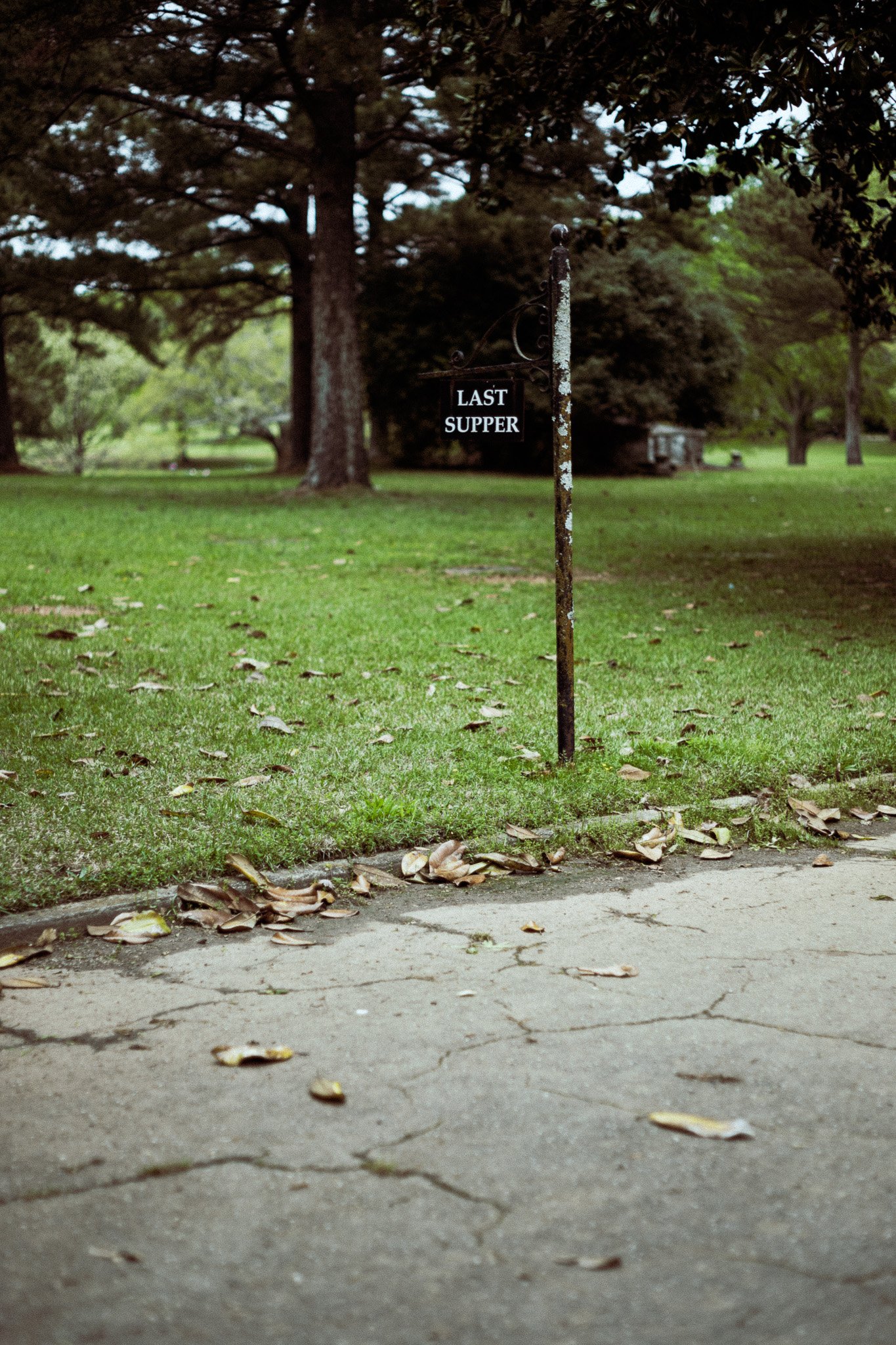cemeteries
I’ve been to Oakland a few times; the last time we were almost arrested.
Okay, that’s probably an exaggeration. It was the wrap party for an indie film I worked on. Very indie; translated: no pay. We were drinking and eating at 6 feet under and someone said “Hey, let’s go walk through Oakland.” Giving no thought to the prospect, we did. And we were kicked out by the night security.
The Security Shack at Oakland Cemetery.
This trip was fraught with much less peril: the biggest concern was making sure I metered properly and removed the back slide from the Mamiya. I inevitably miss a picture or two every time because of that damn slide.
unintentional double exposure.
Or I forget to wind the film and throw another image on top. I was struggling at the beginning. At this point, I was only using 3 cameras but I was shooting two different speeds: 100 on the Mamiya and 200 on the 35. And to further complicate things, I was metering for +1 stop. 😂
Shot on Kodak VISION3 200T 5213 and push cross processed in C-41, you can see the greens pop out like crazy. And the way this stock/process renders concrete and stone.
This is probably my favorite image from the 5213 stock.
I pushed the limits of all the stocks at some point. I wanted to see what the limitations were when shooting in direct sunlight, probably the harshest conditions you can shoot in.
No surprise that the 5213 handled it well and I love the high contrast in all of the images. I got a LOT of low end detail and some pure blacks that I kept just above the floor.
I don’t like how yellow the highlights get at times. Part of that is from the stock but most of it is from what I was doing to it: pushing tungsten film in high key, high contrast direct sunlight conditions. These circumstances, my friend, I wouldn’t recommend shooting daily. But if you’re going to experiment and push the boundaries, might as well go all the way, right?
Are you kidding me? A toy camera took this picture?
At some point I returned the Mamiya back to the car. Too damn heavy to continue to lug around. Still waiting on my Bronica to arrive, I pulled out an old experiment, the Holga.
For those of you that aren’t aware of what this is, it’s a toy camera. That’s not a pet name for it, the damn thing is made of plastic and cheap. I think I bought mine off ebay for $15. The lens is plastic for chrissakes.
But it can take some damn fine pictures AND you’re shooting on 120. I find I like the format better for certain things and it’s easier for me to hit critical focus.
So keeping in the spirit of experimentation, take all control out of the image and use the Holga.
Overall I’m happy with the images and I really wanted to see how Ektar would look with little to no manipulation. When you look at images online shot on Ektar, it appears that the blues really pop.
I’ve shot multiple rolls of Ektar and I’ve pushed every one that I’ve shot this year. And the consistent and recurring theme I’ve found with this stock is when you push it, the magentas really come through. I can’t get the blues to pop without a lot of manipulation, so I leaned into this when editing the photos.
Interestingly enough, I used this same manipulation of magentas when I re-visited the 135 negatives. Pulling magenta out obviously pops the greens, but in the 135 it desaturated the magentas and really helped that contrast pop in the concrete and stone. So I took this same idea to the EOS-R photos.
The Takumar lenses really throw some brownish hues into the image when you stop down which contributed to the overall feel of these pictures. Love the combination of colors with the browns and magentas and greens.
Takumar stopped down. I believe this was the 50mm, but you can see the brown in the shades and low mids. This was straight from the camera balanced only for exposure.
And that’s essentially how I got this look. Not my expectation when shooting and planning but I really enjoyed the experiment and the outcomes.
It’s about the process, not the destination. Next-



























































